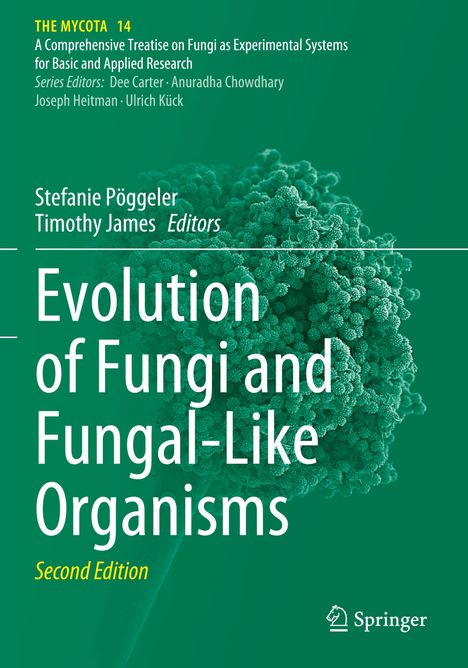Evolution of Fungi and Fungal-Like Organisms, Kartoniert / Broschiert
Evolution of Fungi and Fungal-Like Organisms
(soweit verfügbar beim Lieferanten)
- Herausgeber:
- Stefanie Pöggeler, Timothy James
- Verlag:
- Springer, 08/2024
- Einband:
- Kartoniert / Broschiert, Paperback
- Sprache:
- Englisch
- ISBN-13:
- 9783031292019
- Artikelnummer:
- 11941233
- Umfang:
- 344 Seiten
- Nummer der Auflage:
- 24002
- Ausgabe:
- Second Edition 2023
- Gewicht:
- 726 g
- Maße:
- 254 x 178 mm
- Stärke:
- 18 mm
- Erscheinungstermin:
- 13.8.2024
- Hinweis
-
Achtung: Artikel ist nicht in deutscher Sprache!
Weitere Ausgaben von Evolution of Fungi and Fungal-Like Organisms |
Preis |
|---|
Klappentext
Part I. Evolutionary Roots of Fungi.- Chapter 1. The Protistan Origins of Animals and Fungi.- Chapter 2. Evolution of Signalling and Morphogenesis in the Dictyostelids.- Chapter 3. The Evolution of Mitochondrial Genomes in Fungi.- Part II. Evolution of Pathogenic Strategies.- Chapter 4. Dimorphism and Pathogenesis in Mucor Species.- Chapter 5. Genome Evolution in Fungal Plant Pathogens: From Populations to Kingdom-Wide Dynamics.- Chapter 6. Host Switching and Geographic Expansions in (Hemi) Biotrophic Plant Pathogens.- Part III. Evolution of Mutualistic Interactions.- Chapter 7. Mycoviruses.- Chapter 8. Bacterial Endosymbionts of Mucoromycota Fungi: Diversity and Function of Their Interactions.- Chapter 9. Fungi and Their Environmental Micropredators.- Chapter 10. Global Fungal Diversity Estimated from High-Throughput Sequencing.- Part IV. Evolution of Metabolism and Development.- Chapter 11. Activation of Secondary Metabolite Production in Fungi.-Chapter 12. Evolution and Diversity of Bioluminescent Fungi.- Chapter 13. Paedomorphosis and Sequestrate Basidiomycete.

